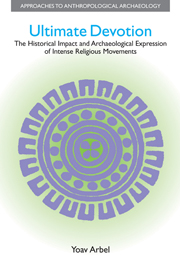 Ultimate Devotion
Ultimate Devotion from Part I
Extreme religious intensity develops in monotheistic faiths and in those that have been notably influenced by them. Even militant nativistic religious movements ironically tend to “borrow” basic theological principles and ideas from Judeo-Christianity, against which they have originally emerged. The Pueblo Revolt's ideology, for example, contained themes such as belief in the resurrection of the dead (compare to Kings II 4:32—35; John 11:17—44; Acts 9:36—41), the nullification of marriages (Ezra 9—10), ritual cleansing in water (Matthew 3:5, II), and the destruction of enemy temples and ritual objects (see Kings I, 15:13; Kings II, II:18, 18:4, 23:6—7). The Catholic Spaniards themselves may have been the unwitting instructors in the latter case, considering the annihilation of the temples and artifacts of New World religions by the earlier conquistadores (Todorov 1984: 200—201, 203—4). The readaptation of Judeo-Christian doctrinal themes is especially common in nativistic millenarianism, as seen in the North American Ghost Dances (La Barre 1970: 229; 232, Hittman 1997: 183—84; Coleman 2000: 5—7), the Cargo Cults of Melanesia and the Pacific (Brewster 1922: 240—41; Crocombe 1961; Williams 1978: 17, 26; Steinbauer 1979: 158) and the millenarian movements of South Africa (see chapter 4).
The connection between religious intensity and monotheism is the subject of this chapter. It focuses not on the deeper psychological and sociological levels but rather on the association between monotheism and intensification in the historical experience of Islam and Christianity.
To save this book to your Kindle, first ensure [email protected] is added to your Approved Personal Document E-mail List under your Personal Document Settings on the Manage Your Content and Devices page of your Amazon account. Then enter the ‘name’ part of your Kindle email address below. Find out more about saving to your Kindle.
Note you can select to save to either the @free.kindle.com or @kindle.com variations. ‘@free.kindle.com’ emails are free but can only be saved to your device when it is connected to wi-fi. ‘@kindle.com’ emails can be delivered even when you are not connected to wi-fi, but note that service fees apply.
Find out more about the Kindle Personal Document Service.
To save content items to your account, please confirm that you agree to abide by our usage policies. If this is the first time you use this feature, you will be asked to authorise Cambridge Core to connect with your account. Find out more about saving content to Dropbox.
To save content items to your account, please confirm that you agree to abide by our usage policies. If this is the first time you use this feature, you will be asked to authorise Cambridge Core to connect with your account. Find out more about saving content to Google Drive.